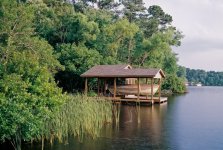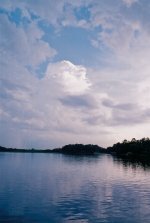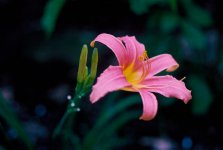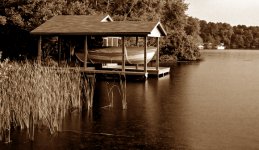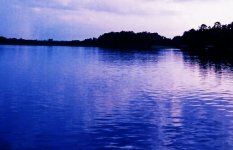venchka
Veteran
Please offer your constructive criticism of the following. Not the greatest photographs ever, but I'm not ashamed of them either. I do strive to improve. With that in mind, "bring it on."
Photos from the week around July 4th of this year. No technical details yet. Just the photos. Thanks for looking. Thanks for your help.
Photos from the week around July 4th of this year. No technical details yet. Just the photos. Thanks for looking. Thanks for your help.
Attachments
Last edited:
brachal
Refrigerated User
Venchka,
Are you sure they posted correctly? The images are showing as broken links in my browser.
Are you sure they posted correctly? The images are showing as broken links in my browser.
venchka
Veteran
Thank you. Same for me. I'll fix it.
venchka
Veteran
Shall we begin again?
jja
Well-known
Hi Wayne,
Nice to see people posting photos. From a quick look, all these photos appear technically (exposure-wise) well executed, and perhaps as photos of a place (the first two) they hold a lot of meaning for you. As an "outsider" to the photos (which most any viewer will be), they do not resonate very strongly with me.
photo #1: There is not enough her to hold my interest.
photo #2: I have many photos like this one, I love clouds and water. In this one, the island (?) on the horizon is indistinct, and, again, there is not enough here to hold the viewer's interest.
photo #3: I like this one the best, because the colors are strong, excellent contrast, and great out-of-focus areas give the flower a certain pop. A good photo to my eye. It holds my attention longer than the other two.
Edit: On #2, maybe the horizon is falling away, but it could still use a little straightening. Depends on how important this issue is for you.
Nice to see people posting photos. From a quick look, all these photos appear technically (exposure-wise) well executed, and perhaps as photos of a place (the first two) they hold a lot of meaning for you. As an "outsider" to the photos (which most any viewer will be), they do not resonate very strongly with me.
photo #1: There is not enough her to hold my interest.
photo #2: I have many photos like this one, I love clouds and water. In this one, the island (?) on the horizon is indistinct, and, again, there is not enough here to hold the viewer's interest.
photo #3: I like this one the best, because the colors are strong, excellent contrast, and great out-of-focus areas give the flower a certain pop. A good photo to my eye. It holds my attention longer than the other two.
Edit: On #2, maybe the horizon is falling away, but it could still use a little straightening. Depends on how important this issue is for you.
Last edited:
brachal
Refrigerated User
Wayne,
I like the flower, but I'm a sucker for wide-open close ups of flowers. It's nicely done. This one is my favorite.
I'm not sure how I feel about the horizon shot. I take a lot of pictures like that, but I'm always disappointed with them. This isn't a bad picture (I'm sure I could do no better), but it does not grab me.
For the first one, I think it would benefit from Capa's maxim -- get closer! I think you're a little too far back -- again, that's one of my own faults.
Keep shooting. I think the only thing that really matters is that you are enjoying what you do. Thanks for sharing your images.
I like the flower, but I'm a sucker for wide-open close ups of flowers. It's nicely done. This one is my favorite.
I'm not sure how I feel about the horizon shot. I take a lot of pictures like that, but I'm always disappointed with them. This isn't a bad picture (I'm sure I could do no better), but it does not grab me.
For the first one, I think it would benefit from Capa's maxim -- get closer! I think you're a little too far back -- again, that's one of my own faults.
Keep shooting. I think the only thing that really matters is that you are enjoying what you do. Thanks for sharing your images.
BSchall
Established
The flower picture is too centered. Too much dead space on the left. The flower leans to the right so move it over to the left and let in lean into the picture. As is, it leans out of the picture.
Picture one, subject wise does nothing for me. Compositionally, it's not bad. The boat house is center again though. But you do have some movement in the picture, the strong line going from the bottom left up to the upper right. The open space along the right works fine. Shifting your point of view slight to the right, making the boat house be more to the left, giving more open space to the right would give better movement.
The second picture is good. The horizon slightly below the midpoint of the photograph breaks the picture up nicely.
Picture one, subject wise does nothing for me. Compositionally, it's not bad. The boat house is center again though. But you do have some movement in the picture, the strong line going from the bottom left up to the upper right. The open space along the right works fine. Shifting your point of view slight to the right, making the boat house be more to the left, giving more open space to the right would give better movement.
The second picture is good. The horizon slightly below the midpoint of the photograph breaks the picture up nicely.
venchka
Veteran
Thanks everyone. You've all been very helpful. Yes, these are "me" pictures. The flower under the kitchen window and the lake in my backyard. Even so, it always helps to do the best I can do. You've helped me in that regard.
I love Woodville. I haven't been there in ages. In a former life, I used to drive US 287 from Beaumont clear across Texas and back. I always tried to make a breakfast stop in Woodville when headed west.
Thanks again. I'll be back.
I love Woodville. I haven't been there in ages. In a former life, I used to drive US 287 from Beaumont clear across Texas and back. I always tried to make a breakfast stop in Woodville when headed west.
Thanks again. I'll be back.
Last edited:
colinh
Well-known
Similar sort of comment from me:
The flower is well done. (I tend to use too little depth of field, and have half the flower out of focus ).
).
The others - apart from the fact that you live there and they show what it's like (nice), *shrug*.
Trees, water, clouds. OK. But where's the subject? Foreground/background?
Not very helpful comments I guess, which is why I take street photos instead.
colin
The flower is well done. (I tend to use too little depth of field, and have half the flower out of focus
The others - apart from the fact that you live there and they show what it's like (nice), *shrug*.
Trees, water, clouds. OK. But where's the subject? Foreground/background?
Not very helpful comments I guess, which is why I take street photos instead.
colin
sirius
Well-known
Here are my thoughts on this.
People take pictures for different reasons. One reason is to remember something that has meaning to you. I'll call these straight documentarian pictures. Another reason is to create art, which is what you seem to be aspiring to by asking our advice.
Art needs to communicate at a deeper level than a straight documentarian picture. Formal means (composition devices such as repetition, implied shapes, leading lines, alignment, focal point) need to come together with content. Both form and content need to align in order to communicate something you feel.
Your photos are all technically proficient, an important thing. But I think they are missing elements of art. How do you feel about these subjects and what's the best way to bring that out? You have chosen subjects that are pretty but do not say a lot more than that with them. What makes that flower special compared to all the other billions of flower pictures in the world? See what I mean? I think you would get tired of looking at these pretty quickly.
For me, the picture that has the most potential is the first one. I like the colour and light. Those are pretty browns and tans and they are set off well by the blues and greens. There are a lot of interesting textures in that picture and some strong shapes. The light has a nice golden quality. I just think you didn't frame that picture properly. Is there some way to take that picture that shows off one of the three aspects I mentioned above? Can you get a composition that places those shapes in the frame in a more interesting way. That might be a good spot for you to return too and try again.
A great photographer once advised me to learn how to see like a camera. That thought is still resonnating in me. How does a camera see differently than the mind's eye and the mind's feelings about a scene? I think the camera can become a tool for the heart to speak. It looks to me like that is what you are trying to achieve. The masters of art photography create moving and lasting images because they align form and content in a heart-felt way.
People take pictures for different reasons. One reason is to remember something that has meaning to you. I'll call these straight documentarian pictures. Another reason is to create art, which is what you seem to be aspiring to by asking our advice.
Art needs to communicate at a deeper level than a straight documentarian picture. Formal means (composition devices such as repetition, implied shapes, leading lines, alignment, focal point) need to come together with content. Both form and content need to align in order to communicate something you feel.
Your photos are all technically proficient, an important thing. But I think they are missing elements of art. How do you feel about these subjects and what's the best way to bring that out? You have chosen subjects that are pretty but do not say a lot more than that with them. What makes that flower special compared to all the other billions of flower pictures in the world? See what I mean? I think you would get tired of looking at these pretty quickly.
For me, the picture that has the most potential is the first one. I like the colour and light. Those are pretty browns and tans and they are set off well by the blues and greens. There are a lot of interesting textures in that picture and some strong shapes. The light has a nice golden quality. I just think you didn't frame that picture properly. Is there some way to take that picture that shows off one of the three aspects I mentioned above? Can you get a composition that places those shapes in the frame in a more interesting way. That might be a good spot for you to return too and try again.
A great photographer once advised me to learn how to see like a camera. That thought is still resonnating in me. How does a camera see differently than the mind's eye and the mind's feelings about a scene? I think the camera can become a tool for the heart to speak. It looks to me like that is what you are trying to achieve. The masters of art photography create moving and lasting images because they align form and content in a heart-felt way.
raid
Dad Photographer
Wayne,
It is excellent that you come forward with a critique request. This is the first step for assessment of your own images. As Sirius has mentioned above, it is important to "see" how a film "sees". The late Galen Rowell was a first class nature photographer who emphasized this important fact in many of his books. They inprired me to search in myself for better creativity.
You three imgaes are well executed, and all it takes is to take a second and third look at each image by yourself and then ask yourself the question: If I could have taken another photo, would I have taken it differently? Why?
Forgive me for playing with your images; I just want to show a different perspective. Maybe all three of the modifcations are lousy! Sometimes, I like to do such modifications to my images with the aim to see if I could have done something different. Often, my attempts don't look good.
In the first modified image, I cropped and removed color, followed by adding some color.
In the second modification, I cropped then added some blue and contrast for extra push.
In the third modifcation, I tried an abstract version of your flower image.
It is excellent that you come forward with a critique request. This is the first step for assessment of your own images. As Sirius has mentioned above, it is important to "see" how a film "sees". The late Galen Rowell was a first class nature photographer who emphasized this important fact in many of his books. They inprired me to search in myself for better creativity.
You three imgaes are well executed, and all it takes is to take a second and third look at each image by yourself and then ask yourself the question: If I could have taken another photo, would I have taken it differently? Why?
Forgive me for playing with your images; I just want to show a different perspective. Maybe all three of the modifcations are lousy! Sometimes, I like to do such modifications to my images with the aim to see if I could have done something different. Often, my attempts don't look good.
In the first modified image, I cropped and removed color, followed by adding some color.
In the second modification, I cropped then added some blue and contrast for extra push.
In the third modifcation, I tried an abstract version of your flower image.
Attachments
Last edited:
colinh
Well-known
sirius said:How does a camera see differently than the mind's eye and the mind's feelings about a scene?
That's an interesting one. The eye or rather the eye with a brain attached is a very strange thing.
I can look at a cloudscape and say wow, but if I try to cram the same amount I can "see" on film I have to use a very wide angle lens, and the clouds become miniscule. Odd.
Or take the full moon a couple of days ago. As it rose just above the horizon it looked enormous (and red, well orange anyway). Take that with a wide angle lens and you have an insignificant dot somewhere.
So one can actually "see" a wide field of view, but the things we concentrate on (in the centre of the field of vision) look almost as if shot with a tele!
Wide angle plus tele at the same time. Veeery strange.
colin
FrankS
Registered User
colinh said:That's an interesting one. The eye or rather the eye with a brain attached is a very strange thing.
I can look at a cloudscape and say wow, but if I try to cram the same amount I can "see" on film I have to use a very wide angle lens, and the clouds become miniscule. Odd.
Or take the full moon a couple of days ago. As it rose just above the horizon it looked enormous (and red, well orange anyway). Take that with a wide angle lens and you have an insignificant dot somewhere.
So one can actually "see" a wide field of view, but the things we concentrate on (in the centre of the field of vision) look almost as if shot with a tele!
Wide angle plus tele at the same time. Veeery strange.
colin
You're right Colin! And that's why Sirius' advice to learn to see like a camera is so very important. The camera simply records an image, and can not do the accommodating that the eye/brain can. This is true for framing, composition and exposure.
raid
Dad Photographer
Frank: Once we learn to predict how an image will look like, we will be able to better control the outcome. Yes, this is true for framing, composition, and exposure.
FrankS
Registered User
I too have taken pictures of visually impressive "harvest moons" only to be disappointed by the way the camera saw and recorded it.
raid
Dad Photographer
A lens/film combination does not have the equivalent of a human's brain (eye sight) in term of "f stops". The brain takes things also farther by allowing imagination to play a role.
colinh
Well-known
FrankS said:You're right Colin! And that's why Sirius' advice to learn to see like a camera is so very important. The camera simply records an image, and can not do the accommodating that the eye/brain can. This is true for framing, composition and exposure.
Ah. I interpret this the other way round. Take pictures corresponding to what you think you see
So, if looking at a fantastic sky or sunset, half the sky aflame with orange clouds, don't bother trying to get them all - use a tele and get a few good ones
Or another take - you might think you see in wide angle, but wide angle shots tend to be boring (to me). As someone (who says a lot of odd things, and changes his mind alot) said, a wide angle is not for fitting more on the film, it's for getting much closer to a foreground object, while still seeing the same background. That is, making the foreground object comparatively much larger (than when using a normal).
This only works when you actually have a foreground
colin
venchka
Veteran
This is a much better disussion than "what WhizBang zoom should I buy next?" I am enjoying it and taking notes.
raid
Dad Photographer
Wayne: What is your input regarding the comments so far? It would help me to know how/what you think.
venchka
Veteran
Raid,
I'm just soaking it all up. All of the comments have been helpful. I seem to recall the "see like film" from somewhere way back when. It's good to hear it again.
This is good:
All good food for thought and hopefully I'll think of ways to put them into practice.
I'm just soaking it all up. All of the comments have been helpful. I seem to recall the "see like film" from somewhere way back when. It's good to hear it again.
This is good:
Ah. I interpret this the other way round. Take pictures corresponding to what you think you see
So, if looking at a fantastic sky or sunset, half the sky aflame with orange clouds, don't bother trying to get them all - use a tele and get a few good ones
Or another take - you might think you see in wide angle, but wide angle shots tend to be boring (to me). As someone (who says a lot of odd things, and changes his mind alot) said, a wide angle is not for fitting more on the film, it's for getting much closer to a foreground object, while still seeing the same background. That is, making the foreground object comparatively much larger (than when using a normal).
This only works when you actually have a foreground .
All good food for thought and hopefully I'll think of ways to put them into practice.
Share:
-
This site uses cookies to help personalise content, tailor your experience and to keep you logged in if you register.
By continuing to use this site, you are consenting to our use of cookies.

